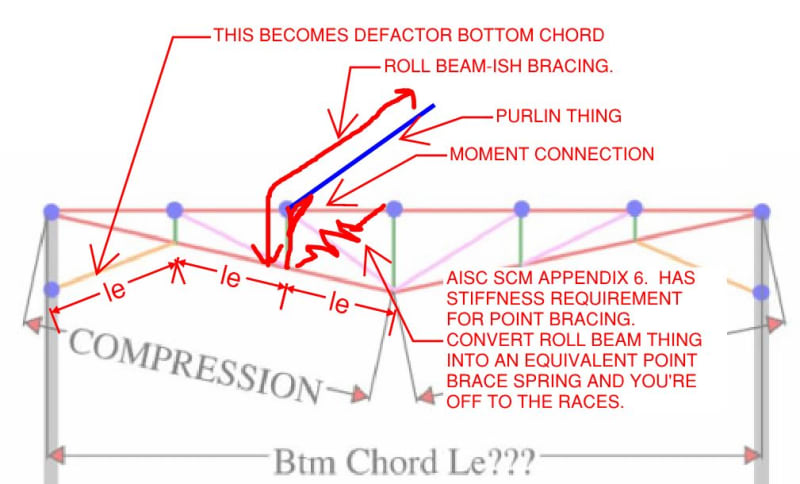KootK said:
I still feel that all engineers should be trained in K-factor stability design...
I completely agree with the sentiment of learning effective length method first! Nowadays, ELM is in the appendix of AISC as an alternative means of stability analysis which kind of indicate the direction we are going. Nevertheless, ELM is quite elegant and very logical and is pedagogically better than DAM. However, once you move from classroom to actual practice, things get messy and the idealizations we made no longer applies. So we end up relying on alignment charts and engineering assumptions.
DAM requires a lot of subtle understanding of material behavior and non-linear analysis. Otherwise it's is just remembering bunch of rules (notional load, stiffness reduction, second-order analysis, etc.). I think the most important insight here is that geometrically non-linear analyses inherently captures instability effects. Therefore, with a couple of adjustments to take into account residual stresses, initial out-of-plumbness, etc. you can get to a much better estimation than ELM.
We have so much compute power nowadays. It's weird to still rely on first-order results, amplify it by B factor, calculate k-factor with alignment chart, and so on when we can tick a single checkbox in the software to do a second-order analysis.
Trenno said:
Do you have any thoughts on determining which ULS load combo to take forth into a buckling analysis?
Elastic critical load analyses only rely on the relative distribution of your loads, not their magnitude. The critical applied load ratio would adjusts accordingly to give you the correct critical load. (e.g. if the critical load is 1000 kips, and your applied load is 1 kips, the ALR is 1000. If your applied load is 500 kips, then the ALR is 2).
As such, I think you should use the most likely load-distribution. But you should check all the cases (gravity, wind, seismic) and get a critical load for each. I think critical load analysis focus on behavior rather than design. It should only ever be used as a screening tool to identify potential stability failure modes. It's not straight-forward to convert critical load to design strength.


